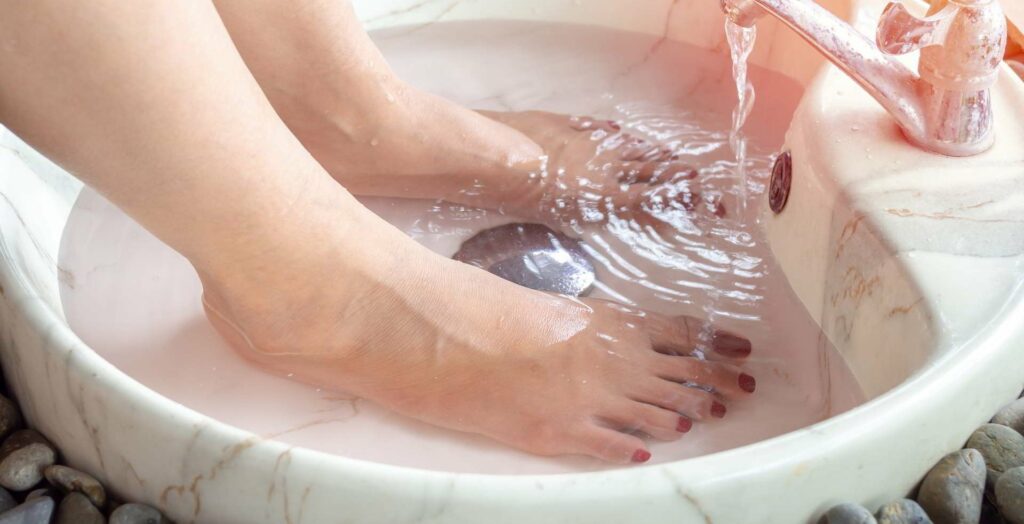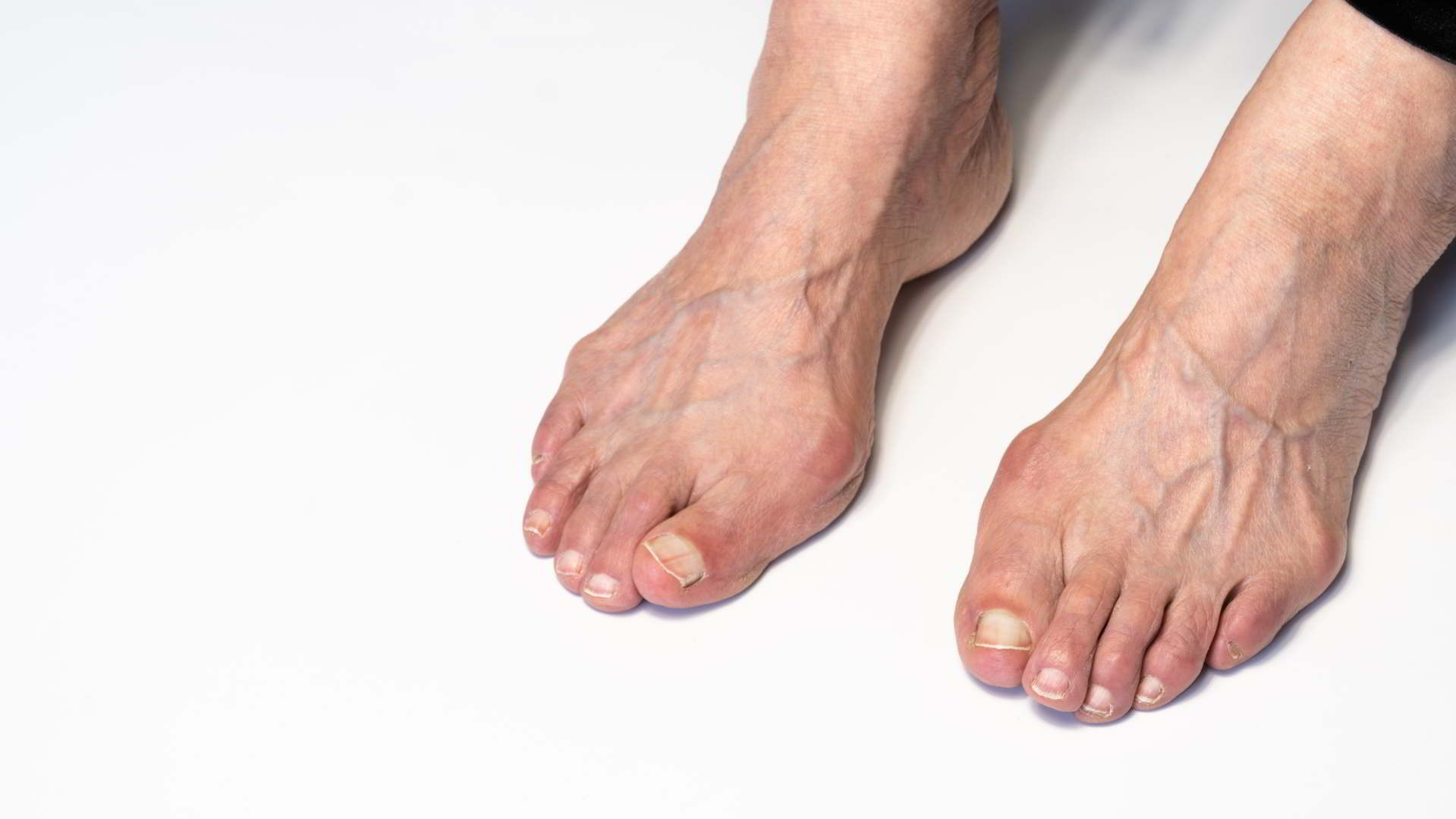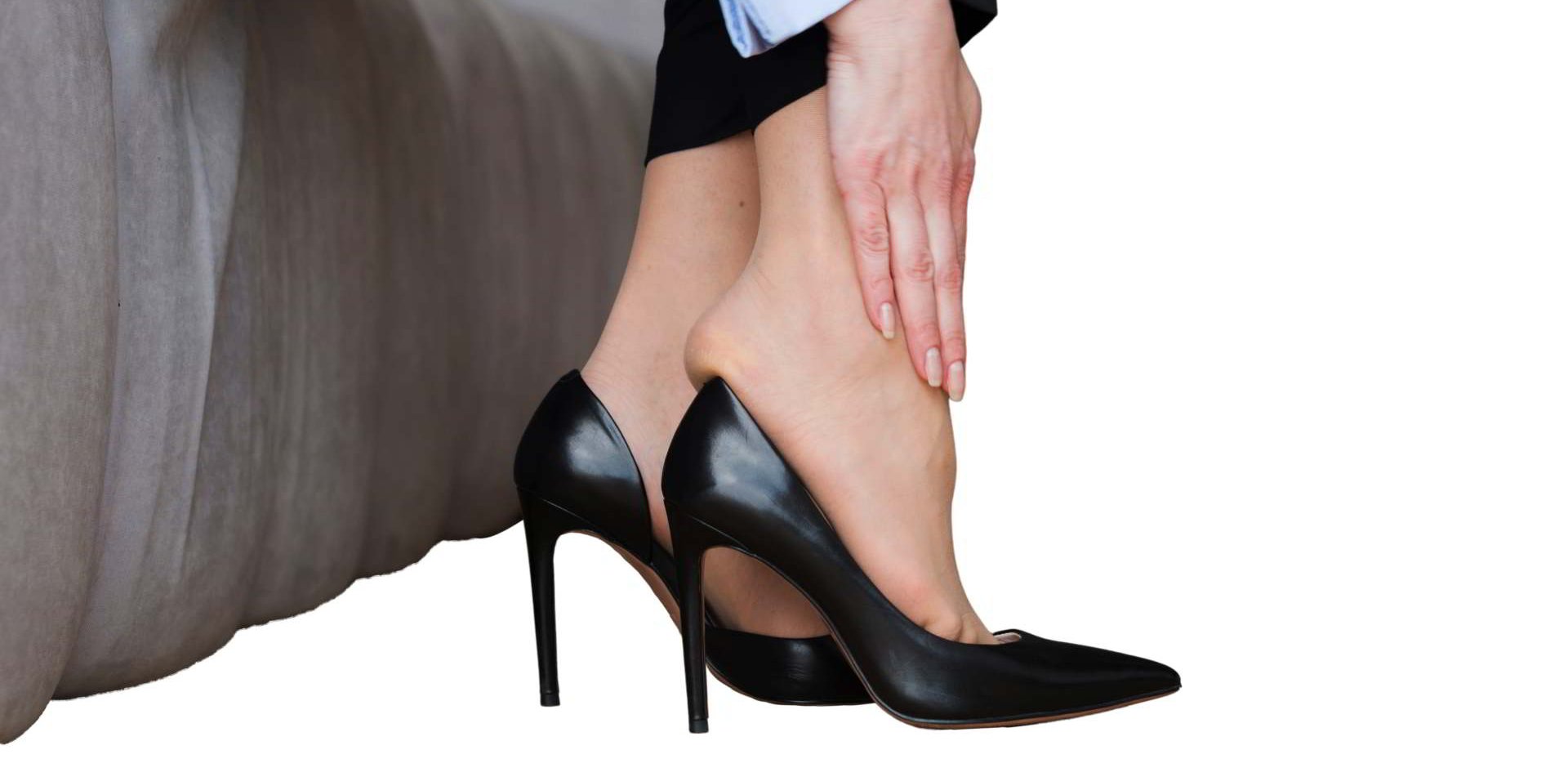Toe Straightening Surgery
Toe straightening surgery is often the solution for a variety of conditions that distort or impair toe alignment, including genetic malformations, chronic pain, bone or muscular diseases, corrections needed after injuries or unsuccessful surgeries, and even aesthetic concerns. This article aims to be your comprehensive guide on the subject, detailing the surgical process, its effectiveness, the health benefits it brings, and essential tips for rapid recovery post-surgery.
The insights provided are grounded in professional clinical experience and up-to-date specialized literature, ensuring trustworthy and valuable information for those considering or preparing for the procedure.
Consultation Form
Provide your details, and we will contact you within less than 24 hours with this special offer.
Toe Straightening Surgery: A Brief Overview
Indications for Surgery:
Key factors influencing the decision for toe straightening surgery include:
- Severity of the toe’s stiffness or pain. Mild and flexible conditions might opt for non-surgical treatments, while severe deformities often require surgery.
- The toe’s interference with daily activities. The more a crooked toe disrupts normal life, the more likely surgery is considered.
- The crooked toe’s reaction to non-surgical treatments.
- Whether pain associated with the toe improves with medication.
- The feasibility of addressing the anatomical or contextual causes behind the toe’s condition.
Surgical Procedure:
Options for toe straightening surgery, determined during pre-surgery consultations, include:
- Minimally Invasive Surgery (MIS), favored for its quick recovery, minimal pain, and same-day discharge due to small incisions and local anesthesia.
- Incomplete Osteotomy of the phalanx, a newer procedure with high success rates, involves precise cuts on the affected phalanx without fully segmenting the bone.
- Tenotomy, or partial/complete tendon cutting, corrects toe misalignment caused by muscular or tendon issues by addressing tension imbalances.
- Other techniques include capsular release, collateral ligament repair, tendon transfers, Duvries or Lapidus technique for the fifth toe, joint fusion (arthrodesis), and joint replacement (arthroplasty).
Risks and Complications:
All surgeries, no matter how minor, carry certain risks. This is why the American Orthopaedic Foot & Ankle Society (AOFAS) recommends against surgery for asymptomatic crooked toes. Toe straightening surgery is among the simpler procedures with a high success rate. However, surgeons are obligated to inform patients of the potential risks involved, which include:
- Infection: The possibility of infection at the surgical site.
- Recurrent Pain or Calluses: Persistent discomfort or the formation of calluses post-surgery.
- Complex Regional Pain Syndrome: Symptoms of severe pain that persist longer than usual.
- Metatarsal Bone Issues: The operated disorder may shift to the adjacent metatarsal bone.
- Development of Other Toe Disorders: New issues such as bunions, hammer toes, mallet toes, or claw toes may emerge.
- Hardware Complications: Breakage or infection of inserted hardware like screws, wires, or fixators.
- Poor Bone Healing: Insufficient or no healing of the operated bone.
- Nerve Damage: Injury to nerves related to the surgical area.
- Non-healing Wounds: Issues with wound healing post-operation.
- Deep Vein Thrombosis: A very small risk of developing deep vein thrombosis.
Minimally invasive surgery can further reduce the likelihood of these risks.
Bunion and Toe Straightening: A Combined Approach
Bunion surgery is often paired with toe straightening procedures. This combination addresses the common scenario where bunions have either caused or resulted from disorders in other toes of the same foot. Moreover, one risk associated with toe straightening surgery is the potential for the disorder to affect adjacent toes.
Given these factors, it’s common for specialists to undertake a combined approach to treat the bunion and straighten other toes, either as a corrective or preventive measure. Key procedures in combined surgeries include arthroplasty (removal of joint parts), arthrodesis (joint fusion), tendon or muscle lengthening, tendon transfers, or joint repositioning.
For more details on this subject, refer to the study “The influence of concomitant hammertoe correction on postoperative outcomes in patients undergoing hallux valgus correction,” published in Elsevier in late 2022.

Preparing for Toe Straightening Surgery
Pre-Surgical Consultation: Attending a pre-surgical consultation with a specialist is crucial. Only a specialist can determine the necessity and type of toe straightening surgery for each patient. During these consultations, precise instructions are given to ensure the surgery goes smoothly, aiming for a minimal and effective recovery period.
What to Expect Before Surgery: Before surgery, the specialist will provide specific guidelines to ensure the patient’s well-being and facilitate the medical team’s work, contributing to the operation’s success. These instructions may include:
- Avoiding smoking and overeating.
- Not eating for a specific number of hours before the surgery (at least 6 hours).
- Avoiding tight clothing and accessories.
- Bringing a companion on the day of the surgery.
- Maintaining proper hygiene, especially of the feet.
- Arranging comfortable transportation for the return home.

Toe Straightening Surgery Cost
Breaking Down the Costs: The overall cost of toe straightening surgery can significantly vary, starting from as low as $2,000 per toe. If the procedure is minimally invasive (MIS), costs are generally lower since there’s no hospital stay and the patient returns home the same day. For non-minimally invasive surgeries, postoperative hospitalization costs must be added. Factors influencing the cost include:
- Location: Where the clinic is situated and whether it’s in an urban center.
- Insurance Coverage: The extent of operation costs covered by the patient’s insurance.
- Professional Fees: Charges by the doctor or specialist team.
- Number of Toes: How many toes need correction.
- Surgical Complexity: Whether it’s a conventional or minimally invasive surgery.
- Technology: The technology used in the procedure.
- Associated Disorders: Patient’s disorders related to crooked toes, whether causes or effects.
- Patient’s Health: Whether the patient has chronic diseases.
- Associated Expenses: Such as pre-surgical consultations or hospitalization.
Considering these factors, the cost range for toe straightening surgery spans from the known low of $2,000 per toe, with an average cost around $5,000, to a high of up to $10,000.
Cost Analysis for Pinky, Big Toe, and Bunion Surgery
Let’s break down the costs for different toe straightening surgeries in a table format. It’s a common practice (though not universal) for combined surgeries on more than one toe to be priced at 75% of the sum of the original prices. In some instances, we also account for additional expenses.
TOE STRAIGHTENING SURGERY PRICE TABLE
| Surgery Type | Price Range | Additional Expense | Total Estimate |
|---|---|---|---|
| Bunion Surgery | $5,000 – $8,500 | $1,500 | $6,500 – $10,000 |
| Big Toe Surgery (hammer toe, claw toe, & mallet toe) | $2,500 – $3,000 | – | – |
| Pinky Toe Surgery (hammer toe, claw toe, & mallet toe) | $2,000 | – | – |
| Bunion + Big or Pinky Toe Surgery | $5,250 – $8,625 | $2,500 – $4,000 | $7,750 – $12,625 |
Combined Surgery: Includes procedures like arthroplasty, arthrodesis, tendon or muscle lengthening, joint repositioning, etc.
This table simplifies the understanding of potential costs involved in toe straightening surgeries, highlighting the base prices, any additional expenses, and the total estimated cost. It’s tailored to provide a clear and easily digestible overview for those considering these surgical options.
Insurance Coverage and Financial Assistance
Insurance policies generally exclude cosmetic toe straightening surgeries from coverage, focusing instead on medically necessary procedures that address issues like pain or mobility. In such cases, insurance often steps in, with Medicare covering up to 80% of the surgery costs and leaving the patient to cover the balance, potentially reduced by secondary insurance. Clinics might offer their own financing solutions, and for any additional out-of-pocket expenses, patients can turn to Flexible Spending Accounts (FSA), Health Savings Accounts (HSA), or Health Reimbursement Accounts (HRA).
Recovery and Post-Operative Care Simplified
Immediate Aftercare
For minimally invasive surgery, hospital admission isn’t necessary, allowing patients to return home the same day. It’s advised to have someone accompany the patient home and provide care during the initial recovery days. Only in cases of more extensive surgery is hospitalization and specialized post-operative care required. While not replacing medical advice, key aftercare tips include:
- Rest is crucial; avoid household chores.
- The operated foot can touch the ground but shouldn’t bear weight. Using crutches, walkers, or wheelchairs is advisable.
- Sleeping with the foot in a normal position from day one is possible.
- Elevate the foot to heart level while seated to prevent bleeding or swelling.
- A special diet isn’t typically required unless specified by a doctor.
Long-Term Care for Best Results
Success in orthopedic surgery hinges not only on the procedure but also on diligent post-operative care and the patient’s commitment. Long-term care involves:
- Requesting time off work to ensure a rest period of 4 to 6 weeks, sometimes up to 8 weeks.
- Starting prescribed physiotherapy precisely when recommended by the doctor.
- Changing lifestyle and footwear habits that may have contributed to the condition, such as avoiding tight, narrow-toed, or high-heeled shoes.
- Regular follow-ups with the specialist for monitoring recovery, physiotherapy recommendations, or early intervention if needed.
- Avoiding strenuous activities or high-impact sports until at least three to four months post-surgery, or per the doctor’s advice.
Understanding Toe Deformities
Before undergoing toe straightening surgery, patients and specialists must take several essential steps. Initially, it’s crucial for patients to understand what a toe deformity entails and the symptoms it causes. This knowledge helps patients grasp the disorder’s impact on their quality of life.
Common Causes of Crooked Toes:
Crooked toes often result from a combination of disorders affecting the foot’s bone or muscular system. Key causes include:
Bunions and Bone Deformities: Crooked toes can coexist with bunions or other deformities, such as polydactyly (extra toes), quintus varus, tailor’s bunion (medial deviation of the small toe), hallux varus (medial deviation of the big toe), or hallux valgus (lateral deviation of the big toe).
Muscular Disorders and Foot Deformities: Imbalances in muscles or tendons often lead to toe deformities, with tenotomy (partial or complete tendon cutting) being a common surgical solution.
Genetic or Hereditary Disorders: Polydactyly, a genetic condition leading to extra toes, can cause crooked toes from birth or develop over time. Friedreich’s Ataxia, a hereditary neurodegenerative disease, affects young people’s coordination, potentially leading to crooked toes.
Ligament, Capsule, and Soft Tissue Issues: Crooked toes may relate to retraction of medial soft parts of the foot, such as the medial collateral ligament and the medial capsule at the metatarsophalangeal joint, causing minor or angular twists.
Trauma or Chronic Non-genetic Diseases: Traumatic disorders destabilizing the second metatarsophalangeal joint, acute or chronic synovitis from rheumatoid arthritis, or connective tissue diseases like systemic lupus erythematosus can lead to crooked toes. Chronic conditions like systemic sclerosis, as highlighted in a 2021 FDA publication “The Voice of the Patient: Systemic Sclerosis,” and trichorhinophalangeal syndrome type 1, associated with crooked fingers and toes, also contribute to this condition.
Understanding these causes is a vital part of the pre-surgery process, aiding patients and specialists in making informed decisions about proceeding with toe straightening surgery.

Symptoms and impact on quality of life
Crooked toes can impact both men and women, but they tend to occur more frequently in women. In 20-30% of cases, the condition can be bilateral, affecting both feet. The most common symptoms include:
- Pain, particularly when wearing tight shoes.
- Visible deformation of the toes and feet.
- Increased susceptibility to fungal infections due to overlapping toes.
- Difficulties in walking or maintaining an upright posture.
- Inability to wear certain types of footwear.
- Limitations in performing specific activities, such as sports or hiking.
- Restrictions in certain job roles due to discomfort or the inability to stand for long periods.
- The easy development of interdigital helomas (corns).
These symptoms not only indicate the physical discomfort and limitations caused by crooked toes but also highlight the broader impact on an individual’s lifestyle and choices, including the type of shoes they can wear, the activities they can participate in, and even the jobs they can perform.
Pinky Toe Deformities: Surgical Solutions
Pinky toe deformities, often caused by tight footwear pressing the toe against its neighbors, may require joint fusion surgery. This procedure involves bone segment removal, toe straightening, and fixation with hardware to correct the deformity.
Big Toe Misalignments: Correction Techniques
Hallux valgus, or bunions, the common big toe misalignment, can be treated with Chevron osteotomy. This surgery cuts and realigns the metatarsal bone, possibly adjusting soft tissues, to straighten the toe and alleviate pain.

Alternatives to Surgical Toe Correction
Non-Surgical or Conservative Methods
Non-surgical, also known as conservative methods, are preferred based on the patient’s age, with younger individuals having a higher success rate. For older patients, the risk of surgery is weighed against the benefits of these non-invasive approaches for symptomatic toe deformities. In children born with toe deformities, these often resolve spontaneously. If not self-corrected by around age 6, conservative treatments usually offer effective correction.
Non-Surgical Treatments
The most common non-surgical treatment includes pain relief medication, which, while not correcting the deformity, alleviates pain. This approach is suitable for minor misalignments and can serve as a temporary relief in more severe cases pending surgery or more advanced non-surgical options.
Orthotics and Lifestyle Changes
Orthopedic devices can correct mild deformities or reduce pain. Toe orthoses relieve pain but do not correct the underlying deformity, contrary to popular belief. Similarly, certain insoles and padding can alleviate pain and assist in correcting mild deformities. Stretching exercises and physiotherapy, under medical guidance, are also beneficial.
To alleviate or prevent bunions and toe deformities, lifestyle modifications, such as avoiding tight or ill-fitting shoes, narrow-toed, or high-heeled footwear, are generally recommended by doctors.
FAQ on Toe Straightening Surgery
What is Toe Straightening Surgery?
Toe straightening surgery aims to correct toe deformities surgically, often involving the removal of a small portion of the misaligned bone, which typically resolves the issue. Alternatively, surgical fusion of joints may be applied.
What is Toe Straightening Surgery?
This surgery is necessary to improve the quality of life impacted by the condition, sometimes for aesthetic reasons. Life quality impacts include pain, walking difficulties, inability to perform certain activities, or wear specific types of footwear.
Can Toes be Straightened Without Surgery?
In some cases, yes. Non-surgical methods can be effective, especially in congenital cases in children, which often self-correct by around age 6. However, the success rate of non-surgical methods diminishes in adults. These methods include:
- Pain relief medication.
- Toe orthoses (alleviate pain but do not correct deformity).
- Stretching exercises.
- Shoe insoles and padding.
- Changing to appropriately sized, non-restrictive footwear.
How Much Does Toe Straightening Surgery Typically Cost?
Costs vary by location and specific surgery factors, ranging from $2,000 to $5,000 per toe. Prices can be higher, so it’s best to consult a surgeon for an exact quote.
Can Toes be Straightened Without Surgery?
These are highly effective, low-risk procedures offering clinical and aesthetic benefits, like pain elimination, posture recovery, and deformity correction. Minimally invasive techniques are straightforward, quick, and require only local anesthesia, reducing pain and recovery time.
What is the Typical Recovery Time After Toe Straightening Surgery?
Minimum recovery time is 3 weeks, typically extending to 4-6 weeks, and up to 8 weeks in some cases. Recovery duration depends on individual progress, with the doctor advising on activity resumption timing.
What are the Risks Associated with Toe Straightening Surgery?
While generally safe with a high success rate, especially for minimally invasive surgery, risks include:
- Recurring pain or calluses.
- Infection.
- Disorder transfer to adjacent metatarsal bone.
- Emergence of other disorders (bunions, hammer toe, mallet toe, claw toe).
- Nerve damage.
- Breakage or infection of inserted devices (nails, wires, fixators).
- Poor or non-healing bone.
- Non-healing wounds.
- Deep vein thrombosis.
Is Toe Straightening Surgery Painful?
The surgery is performed under anesthesia, making it painless. Minimally invasive techniques significantly reduce pain, with prescribed painkillers aiding post-operative recovery.
Are There Any Age Restrictions for Undergoing Toe Straightening Surgery?
There are no age restrictions. Many patients are children with congenital toe deformities, but the condition is also common in the elderly. The decision for surgery is based on activity levels and cosmetic concerns.
How Do Patients Typically Finance Toe Straightening Surgery?
Most medical insurances cover this surgery as it’s rarely for aesthetic purposes only. Medicare covers 80% of the surgery cost, and some clinics offer financing options.
How Soon Can Normal Activities be Resumed After Toe Straightening Surgery?
Work can generally be resumed after 4-6 weeks for non-physically demanding jobs, extending to 6-8 weeks for more physical roles. High-impact activities should wait until the third or fourth month, with some patients needing up to six months before engaging in sports or intense activities. Always consult the surgeon before starting any physical activities.





